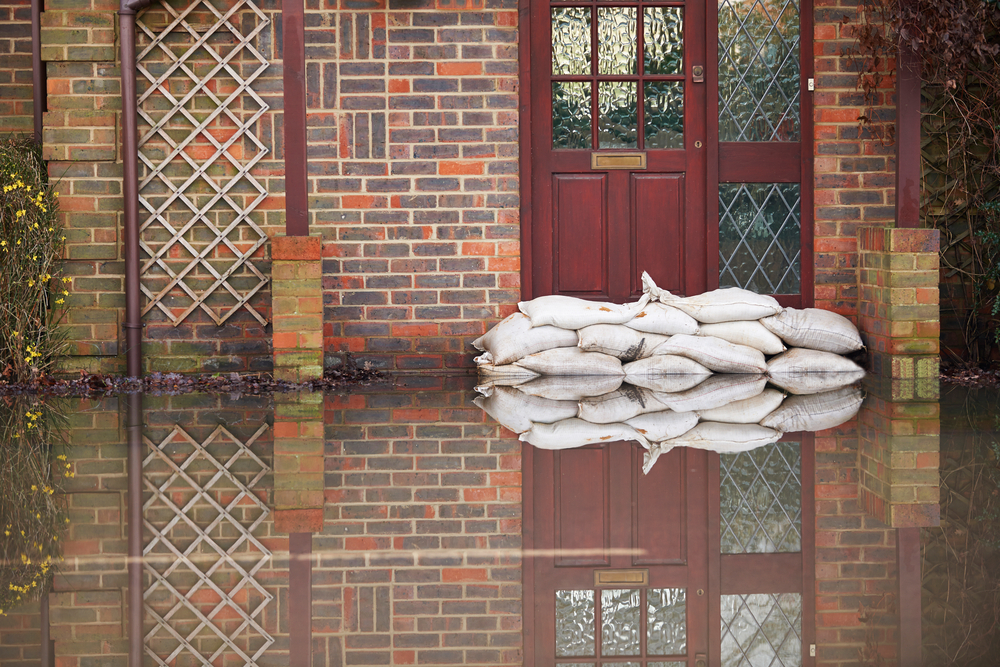
Summer deluges, autumn hurricanes, winter gales . . . it’s an unavoidable fact that storms can hit the UK whatever the season. Extreme weather events wreak devastation on homes and businesses, inflicting billions of pounds worth of damage. In one month alone – February 2020 – the cost of wind and flood damage during storms Dennis and Ciara was more than £360 million.
Forecasters generally give us good warning of approaching storms, offering a window of opportunity to take protective action. But preparing for a storm is one of those tasks you might put off, hoping that when the time comes, your house will somehow survive unscathed. The problem with storms, however, is that they are mightily unpredictable, and whilst the weather report may suggest that a storm is going to be tame, this could quickly change, and you could find yourself and your home in danger of extensive damage.
Read our helpful guide to protect against the worst that the great British weather has to offer!
Met Office Storm Names
Each year, the Met Office produces a list of names for the storms approaching the UK. Weather warnings are put in place to protect residents and to ensure that necessary measures are taken well in advance, and the names of the storms are used to make sure people know which storm is currently live and on a path to your area.
Even in the summer months you should keep an eye on weather warnings from your local news and the Met Office, to be sure you don't get caught out when the next storm rolls in.
Storms across the UK can cause winds of over 90 mph. With winds of this speed, damage to property and cars can, unfortunately, be expected.

Tidy your garden
Whether you live in a house with a garden or a flat with a balcony, no matter how big your outdoor space, perhaps the most important defense against a storm is to make sure that everything is secured or brought inside.
Giving your garden a quick tidy will ensure that anything loose isn't in danger of blowing away. When the wind takes hold, plant pots, garden furniture and even washing lines and fences can be blown away or damaged. If you have a secure shed or garage, make sure that everything is put away safely, or consider storing items inside your house if you don’t have access to a garage or shed.
Top tip: Place a brick on top of your wheelie bin to help weigh it down. If the bin is empty, a bucket of water placed inside will also keep it secure.

Give your trees some TLC
Branches blown down by strong winds can cause a lot of damage. If you have trees in your garden, check for dead or loose branches, and prune these before the storm arrives (hire a professional tree surgeon for taller trees).
If possible, consider parking your car away from any trees too. Debris from trees can cause extensive damage, so parking away from the firing line should help to reduce the risk of expensive car repairs and insurance claims.

Check your fencing
It’s always a good idea to regularly check your fencing throughout the year, but now is the time to do so more than ever. Check that all panels and fixtures are secure, and make any fixes as soon as possible.
Taking the time to protect your fencing now should prevent you from having to undertake emergency repairs when the weather has settled - saving you time and money in the longer term.

Create a flood barrier
Preventing rainwater from entering your home is naturally a top priority as any storm approaches, and stacking sandbags around exterior doors is the most common way to achieve this. If you live in the low-lying ground, it might not always be possible to completely flood-proof your property, but there are steps you can take to limit the damage.
Before purchasing sandbags, it is worth checking with your local council, as often they will provide resources to help reduce this risk. Flood barriers are also a lightweight alternative to sandbags and are easy to lift and install if you believe your property is at risk.
Top Tip: If your home is vulnerable to flooding, be sure to seal and fill any leaks or cracks in the exterior, for example around doors and windows. Temporarily move any furniture, electricals, and precious belongings upstairs or to a higher level.

Don't get caught short
We know it can be hard to find the motivation to get outside when the weather is turning. But there are so many benefits to making sure that you prepare your home and outside spaces before a storm hits - particularly when it comes to the cost of repairs and replacements.
There are many resources available for people and homes at risk. The Red Cross has an emergency app to help you keep track of weather warnings and advice following an emergency. Don't forget to keep an eye on your local news and weather reports for advice on upcoming storms!
